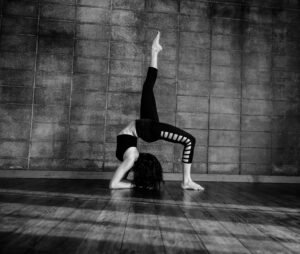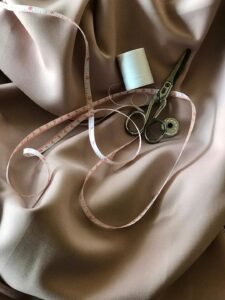Comprehensive Guide of Weaving
Overview
Weaving is a traditional craft that involves interlacing threads or yarns to create fabric or textile products. This hobby allows individuals to express their creativity while producing functional and decorative items such as scarves, blankets, and wall hangings. Weaving can be done using various techniques and tools, including looms, hand looms, and even simple finger weaving. The process of weaving not only fosters artistic expression but also promotes mindfulness and relaxation, making it a rewarding pastime for many. Enthusiasts often enjoy experimenting with different materials, patterns, and colors, resulting in unique and personalized creations.
History
The history of weaving dates back thousands of years, with evidence of woven textiles found in ancient civilizations such as Egypt, Mesopotamia, and the Americas. The earliest known woven fabrics were made from natural fibers like flax, wool, and cotton. As societies evolved, so did weaving techniques, leading to the development of intricate patterns and styles. The invention of the loom around 5000 BC revolutionized the craft, allowing for more complex designs and faster production. Throughout history, weaving has played a significant role in cultural identity, with different regions developing their unique styles and techniques, such as the Navajo rugs in the United States and the tartans of Scotland. Today, weaving continues to be a cherished craft, blending traditional methods with modern innovations.
Popularity and Demographics
Weaving has seen a resurgence in popularity in recent years, appealing to a diverse audience that includes both seasoned artisans and newcomers to the craft. Workshops, classes, and online tutorials have made weaving more accessible, attracting individuals of all ages, particularly millennials and Gen Z, who are drawn to handmade and sustainable practices. According to a survey by the Craft and Hobby Association, approximately 15% of American adults engage in some form of textile crafting, with weaving being a significant subset. Social media platforms, especially Instagram and Pinterest, have also contributed to the hobby’s growth, allowing weavers to share their work, connect with others, and find inspiration. The rise of eco-consciousness has further fueled interest in weaving, as many enthusiasts seek to create sustainable and environmentally friendly products.
Sponsored Hobbyists and Vendors
Become a Sponsor!
Affiliate Disclaimer: Throughout some sections below, Hobby Spotlight may suggest some tools, equipment or material using affiliate links. By purchasing any of those items, Hobby Spotlight may earn a small commission. This helps fund our website, content and services without directly charging our users.
Getting Started
Essential Weaving Tools:
Beginner
- Weaving Loom: A simple frame loom for beginners to create basic woven projects.
- Yarn: Basic yarn suitable for various weaving projects.
- Scissors: Sharp scissors for cutting yarn and fabric.
- Tapestry Needle: Large-eyed needle for weaving in ends and finishing projects.
- Measuring Tape: Flexible measuring tape for measuring yarn and fabric lengths.
Intermediate
- Rigid Heddle Loom: A more advanced loom for creating intricate woven patterns.
- Warping Board: Tool for measuring and preparing warp threads for weaving.
- Shuttle: Tool used to carry the weft thread across the warp threads.
- Yarn Winder: Device for winding yarn into neat balls or cakes.
- Weaving Book: Instructional book with patterns and techniques for intermediate weavers.
Basic Requirements and Initial Setup:
- Weaving Loom: A loom is essential for weaving, available in various types such as rigid heddle, floor, and table looms. Choose one based on your project size and complexity.
- Yarn and Thread: Select appropriate yarn or thread for your project, considering fiber content, weight, and color. Natural fibers like cotton, wool, and linen are popular choices.
- Weaving Tools: Basic tools include a shuttle for passing the weft thread, a warping board for measuring yarn, and scissors for cutting threads. Additional tools like a tapestry needle and a beater may also be useful.
Fundamental Skills to Learn:
- Warping the Loom: This involves setting up the loom with vertical threads (warp) that will hold the fabric together.
- Understanding Weave Structures: Familiarize yourself with different weave patterns such as plain weave, twill, and satin to create various textures and designs.
- Shuttle Handling: Learn how to properly use the shuttle to pass the weft thread through the warp threads efficiently.
- Color Theory: Understanding color combinations and contrasts can enhance the visual appeal of your woven pieces.
- Finishing Techniques: Master techniques like washing, pressing, and hemming to complete your woven projects professionally.
Sub-Hobby/Common Activities:
- Tapestry Weaving: Creating decorative wall hangings using various colors and patterns.
- Rug Weaving: Crafting durable rugs using thicker yarns and specific techniques for added texture.
- Cloth Weaving: Producing fabric for garments or home textiles, focusing on different weave patterns.
- Basket Weaving: Utilizing weaving techniques to create functional and decorative baskets from natural materials.
- Knitting and Crochet Integration: Combining weaving with knitting or crochet to create unique textile art pieces.
Terminology:
- Warp: The set of vertical threads on the loom that provide structure to the woven fabric.
- Weft: The horizontal threads that are woven through the warp to create fabric.
- Loom: A device used to hold the warp threads in place while weaving the weft threads.
- Shuttle: A tool used to carry the weft thread back and forth across the warp threads.
- Heddle: A device that holds the warp threads in place and helps to separate them for weaving.
- Selvage: The finished edge of the fabric that prevents fraying and maintains the integrity of the weave.
- Beater: A tool used to push the weft thread into place against the previously woven fabric.
- Draft: A diagram or pattern that shows how to set up the loom and the order of the weave.
- Finishing: The process of completing a woven piece, including washing, pressing, and trimming edges.
- Texture: The surface quality of the woven fabric, influenced by the choice of yarn and weave structure.
Advanced Topics and Specializations
Advanced Tools and Equipment:
- Floor Loom: A large, multi-shaft loom that allows for complex weaving patterns and larger projects.
- Weaving Shuttle: A specialized tool used to carry the weft thread across the warp threads, designed for efficiency and precision.
- Warping Board: A tool used to measure and wind warp threads, essential for setting up a loom for weaving.
- Tapestry Needle Set: A set of large-eyed needles designed for weaving in ends and adding details to tapestry projects.
- Weaving Ruler: A specialized ruler for measuring and marking threads accurately, ensuring precision in weaving projects.
Advanced Projects and Achievements:
- Complex Tapestry Weaving: Creating intricate wall hangings that combine various techniques, colors, and textures to tell a story or convey a theme.
- Handwoven Garments: Designing and producing unique clothing items such as scarves, shawls, or jackets using specialized weaving techniques and fibers.
- Rug Weaving: Crafting durable and artistic rugs using traditional methods, incorporating patterns and colors that reflect personal style or cultural heritage.
Advanced Techniques and Methods:
- Jacquard Weaving: Utilizing a Jacquard loom to create complex patterns and images in fabric, allowing for greater design flexibility and detail.
- Double Weave: A technique that allows for the creation of two layers of fabric simultaneously, enabling unique textures and color combinations.
- Warp and Weft Manipulation: Mastering the art of adjusting the tension and arrangement of warp and weft threads to achieve desired patterns and structural integrity.
Specializations and Niche Areas:
- Eco-Friendly Weaving: Focusing on sustainable materials and practices, such as using organic fibers and natural dyes to create environmentally conscious textiles.
- Historical Weaving Techniques: Reviving ancient methods and patterns from various cultures, preserving traditional craftsmanship and heritage.
- Mixed Media Weaving: Incorporating non-traditional materials such as metal, plastic, or paper into woven pieces for innovative and contemporary designs.
- Functional Weaving: Creating practical items like baskets, mats, or storage solutions that combine aesthetics with utility.
- Art Weaving: Focusing on weaving as a form of artistic expression, producing pieces intended for gallery display rather than functional use.
Future Trends and Innovations:
- Increased use of sustainable and recycled materials in weaving projects.
- Integration of digital design tools to create custom patterns and designs for weaving.
- Growing popularity of community weaving projects that promote collaboration and shared learning.
- Adoption of smart looms that offer programmable features for enhanced creativity and efficiency.
- Expansion of online platforms for sharing techniques, patterns, and finished projects among weavers worldwide.
Technology Integrations:
- Digital Looms: Advanced looms equipped with software that allows for precise control over patterns and designs, streamlining the weaving process.
- Online Learning Platforms: Websites and apps offering tutorials, courses, and community forums for weavers of all skill levels.
- 3D Weaving Technology: Innovations that enable the creation of three-dimensional woven structures for unique applications in fashion and design.
- Augmented Reality (AR) Tools: Using AR to visualize patterns and color combinations before starting a project, enhancing the design process.
- Social Media Integration: Platforms that allow weavers to showcase their work, connect with others, and participate in challenges and collaborations.
Further Learning and Resources
Books:
- The Weaver’s Idea Book by Anne Dixon: This book offers a collection of over 100 weaving patterns and ideas, making it an excellent starting point for beginners to explore various techniques.
- Learning to Weave by Deborah Chandler: An accessible introduction to weaving that walks beginners through the process, from setting up a loom to creating beautiful woven pieces.
- The Complete Book of Weaving by Candace Crockett: A comprehensive resource that delves into advanced weaving techniques and projects, perfect for experienced weavers looking to enhance their skills.
Websites:
- Weaving Today, https://www.weavingtoday.com – A comprehensive resource for weavers, featuring articles, projects, and tips for all skill levels.
- Handwoven Magazine, https://www.interweave.com/product/handwoven-magazine – A magazine dedicated to weaving, offering patterns, techniques, and inspiration for weavers.
- Weaving Works, https://www.weavingworks.com – An online store with a wide selection of weaving supplies, tools, and yarns, along with helpful resources.
- Ravelry, https://www.ravelry.com’ target=’_blank’>https://www.ravelry.com – A community for fiber enthusiasts, including a section for weavers to share projects, patterns, and advice.
- Weaving Tutorials, https://www.weavingtutorials.com – A site offering free tutorials and videos on various weaving techniques and projects.
Courses:
- Weaving for Beginners, https://www.craftsy.com/class/weaving-for-beginners – An introductory course covering the basics of weaving, suitable for complete beginners.
- Advanced Weaving Techniques, https://www.udemy.com/course/advanced-weaving-techniques – A course designed for experienced weavers looking to expand their skills and explore complex patterns.
- Online Weaving Workshop, https://www.interweave.com/product/online-weaving-workshop – A series of workshops focusing on different weaving techniques and styles, suitable for all levels.
- Skillshare Weaving Classes, https://www.skillshare.com/browse/weaving – A variety of project-based classes for weavers of all skill levels, taught by experienced instructors.
- Weaving Mastery Course, https://www.weavingmastery.com – A comprehensive course that covers everything from basic to advanced weaving techniques, with a focus on skill development.
Content Creators and Community
Content Creators:
- The Weaving Goddess (YouTube): A passionate weaver sharing tutorials on various weaving techniques, from beginner to advanced, along with tips on selecting materials and tools.
- Weaving with Wool (Instagram): Showcases stunning woven art pieces and provides insights into the creative process, along with engaging stories about the craft.
- Loom and Spindle (Website): A blog dedicated to weaving, featuring detailed guides, project ideas, and resources for weavers of all skill levels.
Online Forums and Social Media Groups:
- Reddit – /r/weaving: A community for sharing projects, asking questions, and discussing techniques related to weaving.
- Facebook Weaving Groups: Various groups where weavers connect, share their work, and exchange tips and resources.
- Weaving Community on Discord: An interactive platform for live discussions, sharing projects, and getting feedback from fellow weavers.
- Instagram Hashtags (#weaving, #handwoven): Follow these hashtags to discover inspiring woven creations and connect with other weavers.
- Pinterest Boards: Explore a plethora of weaving ideas, patterns, and tutorials curated by weaving enthusiasts.
Local Clubs and Organizations:
- Weaving Guilds: Many regions have local weaving guilds that offer workshops, resources, and community support for weavers.
- Community Craft Centers: Often host weaving classes and events for hobbyists to learn and share their skills.
- Artisan Fiber Festivals: Events that celebrate fiber arts, including weaving, with workshops, demonstrations, and vendor booths.
- Local Craft Stores: Many craft stores offer weaving classes and host meetups for local weavers to connect.
- Meetup Groups: Platforms like Meetup.com can help you find local weaving clubs and gatherings to share techniques and projects.
Events, Meetups, and Conventions:
- Weaving and Fiber Arts Festival: An annual event featuring workshops, demonstrations, and vendor booths dedicated to weaving and fiber arts.
- Local Weaving Competitions: Regional contests that encourage creativity and skill development among weavers.
- Craft Fairs: Many craft fairs include sections dedicated to weaving, showcasing artisans and their work.
- Workshops at Fiber Festivals: Opportunities to learn from experienced weavers and enhance your skills through hands-on workshops.
- National Weaving Conference: A gathering of weaving enthusiasts featuring lectures, workshops, and networking opportunities.
Associated Hobbies
- Knitting: Knitting is a popular craft that involves creating fabric by interlocking loops of yarn with needles. Many weavers also enjoy knitting as it allows for the creation of garments and accessories, often using similar techniques and materials.
- Crocheting: Similar to knitting, crocheting uses a hooked needle to create fabric. It offers a different texture and style, and many weavers explore crocheting to expand their textile skills and create unique pieces.
- Spinning: Spinning involves turning fiber into yarn, which can then be used for weaving or knitting. Many weavers take up spinning to create their own custom yarns, allowing for greater creativity and personalization in their projects.
- Dyeing: Dyeing is the process of adding color to fibers or fabrics. Weavers often experiment with dyeing techniques to create vibrant, one-of-a-kind textiles, enhancing their weaving projects with unique color palettes.
- Sewing: Sewing complements weaving by allowing individuals to construct finished items from woven fabric. Many weavers enjoy sewing as a way to bring their woven creations to life, making garments, home decor, and more.
- Embroidery: Embroidery is the art of decorating fabric with needle and thread. Weavers often incorporate embroidery into their projects, adding intricate designs and personal touches to their woven pieces.
- Textile Art: Weaving can be a form of textile art, where artists create pieces that are more about expression than functionality. Many weavers explore this avenue, using their skills to create stunning wall hangings and decorative items.
- Quilting: Quilting involves sewing together layers of fabric to create a thicker padded material. Weavers may use their woven fabrics in quilting projects, combining different textile techniques to produce beautiful quilts.
Cost and Budgeting
Initial Investment and Ongoing Costs:
- Initial Investment: The cost to start weaving can vary based on the type of weaving you choose. A basic loom can range from $50 to $300, while more advanced looms can cost upwards of $1,000. Additionally, you’ll need yarn, which can cost anywhere from $5 to $30 per skein, depending on the material and quality.
- Ongoing Costs: Ongoing costs include purchasing yarn, which can add up depending on the projects you undertake. Specialty yarns, such as silk or alpaca, can be more expensive. Other costs may include tools like shuttles, bobbins, and finishing supplies, which can range from $10 to $100 annually, depending on your usage.
Budget-Friendly Options:
- DIY Looms: You can create your own simple looms using materials like cardboard or wood, which can significantly reduce initial costs.
- Yarn Stash: Use leftover yarn from previous projects or swap yarn with friends to save on material costs.
- Community Classes: Look for local community centers or craft stores that offer weaving classes, often providing access to looms and materials at a lower cost.
Where to Buy:
- Local Craft Stores: Stores like Michaels or Joann Fabrics often carry a variety of looms and yarn, along with helpful staff who can provide advice.
- Specialty Weaving Shops: These shops focus on weaving supplies and often have a wider selection of looms and specialty yarns.
- Online Retailers: Websites like Etsy, Amazon, and WeavingWorks offer a broad range of weaving supplies, often with customer reviews to help guide your purchases.
Money Making
How to Turn the Hobby into a Profession or Side Hustle:
- Handwoven Textile Business: Start a business creating and selling handwoven textiles such as scarves, blankets, and wall hangings. You can sell your products at local craft fairs, online marketplaces, or through your own website. Focus on unique designs and high-quality materials to attract customers.
- Weaving Workshops and Classes: Share your passion for weaving by offering workshops and classes. You can teach beginners the basics of weaving or offer advanced techniques for experienced weavers. Classes can be held in person or online, allowing you to reach a wider audience.
- Custom Weaving Services: Offer custom weaving services for clients looking for unique pieces tailored to their specifications. This could include creating custom rugs, upholstery, or art pieces. Building a portfolio of your work can help attract clients and showcase your skills.
- Weaving Content Creator: Start a blog, YouTube channel, or social media account dedicated to weaving. Share tutorials, tips, and your weaving journey with an audience. Monetize your content through sponsorships, affiliate marketing, or by selling digital products like patterns and guides.
- Weaving Supply Store: If you have a good understanding of weaving materials and tools, consider opening a store that sells weaving supplies. This could include yarn, looms, and other accessories. You can also offer online sales to reach a broader customer base.
Benefits and Enjoyment
Physical, Mental, and Social Benefits:
- Physical Activity: Weaving involves various physical movements, including hand-eye coordination and fine motor skills. The repetitive motions can enhance dexterity and strengthen hand muscles, contributing to overall physical health.
- Mental Relaxation: Engaging in weaving can be a meditative experience, allowing individuals to focus on the rhythm of the craft. This mindfulness can reduce stress and anxiety, promoting mental clarity and emotional well-being.
- Social Connection: Weaving can be a communal activity, often enjoyed in groups or classes. Sharing techniques, ideas, and finished projects fosters friendships and a sense of community among enthusiasts.
Success Stories and Inspirational Examples:
- Debbie McCulloch: A renowned weaver and textile artist, Debbie has transformed her passion for weaving into a successful career. Her work has been featured in galleries and exhibitions, inspiring many to explore the art of weaving.
- Mary Zicafoose: An award-winning weaver, Mary has gained recognition for her innovative techniques and vibrant designs. She has authored books on weaving and teaches workshops, encouraging others to embrace this craft.
- Ruth Ozeki: An accomplished author and filmmaker, Ruth incorporates weaving into her storytelling. Her work highlights the cultural significance of textiles and inspires readers to appreciate the art of weaving.
Ways to Enjoy and Grow in the Hobby:
- Experiment with Different Techniques: Explore various weaving methods, such as tapestry, loom weaving, or freeform weaving. Trying new techniques can enhance your skills and keep the hobby fresh and exciting.
- Join a Weaving Guild: Becoming a member of a local weaving guild or community can provide valuable resources, support, and opportunities to learn from experienced weavers. These groups often organize workshops, exhibitions, and social events.
- Attend Workshops and Classes: Participating in workshops or classes can help you refine your skills and learn new techniques. Many local craft stores and community centers offer classes for all skill levels, making it easy to find opportunities to grow.
Challenges and Solutions
Common Challenges Faced by Hobbyists:
- Learning Curve: Weaving can be complex, especially for beginners. Understanding different techniques, patterns, and equipment can be overwhelming, leading to frustration.
- Cost of Materials: High-quality yarns, looms, and other weaving supplies can be expensive. Hobbyists may struggle to find affordable options without compromising on quality.
- Space Requirements: Weaving often requires a dedicated space for looms and materials. Limited space can hinder the ability to set up and work on projects comfortably.
- Time Commitment: Weaving can be time-consuming, and many hobbyists find it challenging to balance their weaving projects with other responsibilities.
Tips for Overcoming These Challenges:
- Start Small: Begin with simple projects to build your skills and confidence. Gradually progress to more complex patterns as you become more comfortable with the techniques.
- Budget Wisely: Look for sales, discounts, or bulk purchasing options for yarn and supplies. Consider using less expensive materials for practice projects.
- Organize Your Space: Create a designated area for weaving that is tidy and accessible. Use storage solutions to keep your materials organized and within reach.
- Set Realistic Goals: Break larger projects into smaller, manageable tasks. Allocate specific times for weaving to ensure you make consistent progress without feeling overwhelmed.
Safety Considerations and Best Practices:
- Ensure your workspace is well-lit and free from clutter to prevent accidents while weaving.
- Use ergonomic tools and maintain good posture to avoid strain or injury during long weaving sessions.
- Keep sharp tools, such as scissors and needles, out of reach of children and pets to prevent accidents.
- Be mindful of allergies to certain fibers or dyes, and use gloves or masks if necessary when handling materials.
- Follow proper care instructions for your woven items to ensure their longevity and maintain safety, especially for items used in home decor or clothing.
Conclusion and Encouragement
Recap of Key Points:
- Weaving is a versatile craft that allows for the creation of textiles, art pieces, and functional items, making it suitable for both practical and artistic expression.
- There are various types of weaving techniques, including hand weaving, loom weaving, and tapestry weaving, each offering unique challenges and rewards.
- Weaving can be a meditative practice, promoting mindfulness and relaxation as you focus on the rhythm of the process and the transformation of materials.
- With a wide range of materials available, from traditional fibers like cotton and wool to modern options like synthetic threads, weavers can experiment and innovate in their projects.
- Joining a weaving community or taking classes can enhance your skills, provide inspiration, and connect you with fellow enthusiasts who share your passion.
Encouragement to Start and Enjoy Weaving:
- Weaving is an accessible hobby that can be started with minimal investment. Beginners can use simple tools like a frame loom or even their hands to create beautiful pieces.
- It offers a wonderful opportunity to express creativity. Whether you want to make scarves, wall hangings, or intricate tapestries, the possibilities are endless.
- Weaving can be a social activity, allowing you to connect with others through workshops, online forums, or local crafting groups, fostering friendships and shared learning experiences.
Final Tips and Motivational Thoughts:
- Don’t be afraid to experiment with different materials and techniques. Mistakes can lead to unexpected and beautiful results, so embrace the learning process.
- Set aside regular time for weaving to develop your skills and enjoy the therapeutic benefits of the craft. Consistency will help you improve and find joy in your creations.
- Share your woven creations with others, whether through social media or local craft fairs. Celebrating your work can inspire others and build a supportive community around weaving.

















